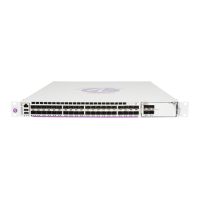Common Configuration Tasks
Page 92 7705 SAR OS Services Guide
Configuring SDPs
Every service destination point (SDP) must have the following items configured:
• a locally unique SDP identification (ID) number
• the system IP address of the far-end router
• an SDP encapsulation type — MPLS, GRE, or IP
SDP Configuration Considerations
Consider the following SDP characteristics when creating and configuring an SDP.
• SDPs can be configured as MPLS, GRE, or IP.
• If an SDP configuration does not include the IP address of the associated far-end
router, then VLL services to the far-end router cannot be provided.
• A service must be bound to an SDP.
• An SDP is only used when a service is bound to it.
By default, SDPs are not associated with services. Once an SDP is created, services
can be associated with that SDP.
• An SDP can have more than one service bound to it. That is, an SDP is not specific
or exclusive to any one service or any type of service.
• When configuring an SDP:
→ The far-end SDP IP address must be the system IP address of a 7705 SAR or an
SR-series router.
→ For MPLS SDPs, the LSPs must be configured before the LSP-to-SDP
associations can be assigned. The LSP-to-SDP associations must be created
explicitly.
→ Automatic ingress and egress labeling (targeted LDP) is enabled by default.
Ingress and egress VC labels are signaled over a targeted LDP connection
between two 7705 SAR routers.
Note: If signaling is disabled for an SDP, then ingress and egress vc-labels
for the services using that SDP must be configured manually.

